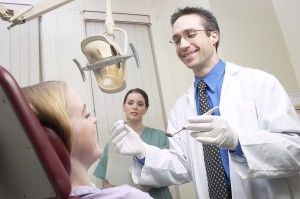April is National Cancer Control Month, and you might not be aware of the fact that incidences of oral cancer are on the rise. Few people think about oral cancer, but it kills more people every year than brain cancer, cervical  cancer, and testicular cancer put together. But the more you learn about oral cancer and its signs and symptoms, the better able you’ll be to get an early diagnosis and more effective treatment should oral cancer happen to you. Oral cancer responds very well to treatment in the earliest stages.
cancer, and testicular cancer put together. But the more you learn about oral cancer and its signs and symptoms, the better able you’ll be to get an early diagnosis and more effective treatment should oral cancer happen to you. Oral cancer responds very well to treatment in the earliest stages.
What are the risk factors for oral cancer?
The risk factors for oral cancer include smoking and chewing tobacco use, excessive alcohol consumption, and human papillomavirus (HPV), although some people develop oral cancer despite having none of these risk factors. It is believed that genetics, too, plays a role in the development of cancers, including oral cancer, as well as dietary factors. Because there are so many various contributing factors, everyone should get checked by their dentist for oral cancer at their dental checkups.
What are the symptoms of oral cancer?
The symptoms of oral cancer include:
- A flat, painless, white or red spot or sore.
- A sore that bleed easily or does not heal.
- A color change of the oral tissues.
- A lump, thickening, rough spot, crust, or small, eroded area.
- Pain, tenderness, or numbness anywhere in the mouth or on the lips.
It can be hard to see every spot in your mouth clearly, which is where your dentist comes in. He or she can take a look at any questionable areas and alert you if there’s a potential problem. Waiting until the symptoms become extremely obvious means wasting valuable treatment time that could save your life.
So why not make an appointment with your dentist for an exam during National Cancer Control Month? Set your mind at ease knowing that you’ve gone the extra mile for not only your oral health, but your overall health, too!
Comments are closed.